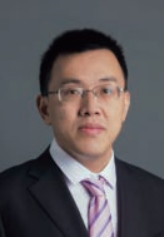Sheng Sun1,2*, Tong-Yi Zhang1
1Materials Genome Institute, Shanghai China
2Zhejiang Laboratory, Hangzhou China
EXTENDED ABSTRACT: As the intersection of materials and mechanics with information science and computer science, the mechanoinformatics and materials informatics are developing rapidly, and artificial intelligence is beginning to penetrate all branches of the mechanics and materials discipline as a powerful tool that promises to transform the traditional research paradigm of materials and mechanics. This work develops a data-to-formula AI algorithmic framework and provides a parallel computer program for searching formulas based on data based on empirical rules of existing formulas. Preliminary tests show that for a task of 50 data and 109 equations to be searched, the present algorithm and program can complete the search tasks for all equations on a single CPU node (24 cores) in a few hours. Test cases on known equations show that this program can accurately rediscover the original equations with only 50 data and with 5% Gaussian error in the data. Tests on real experimental data show that the equations obtained by this program for experimental data on creep of nanocrystalline Cu at different temperatures can also accurately describe experimental data on stress relaxation in coarse-crystalline Cu, nanocrystalline Cu and nanotwin Cu with errors better than those given by expert knowledge.
Keywords: Materials informatics; formulation models; sparse modeling; evolutionary computation; parallel programs

孙升, 博士, 上海大学材料基因组工程研究院研究员, 博士生导师, 之江实验室高级研究专家, 中国力学学会第1届数据驱动计算力学方法专业组成员。”之江昆吾“智能计算材料平台主要建设人之一。长期从事计算材料、 计算力学、 材料信息学和力学信息学研究。 主持3项国家自然科学基金项目, 参与多项科技部重点研发计划项目、 国家自然科学基金项目和省部级项目。